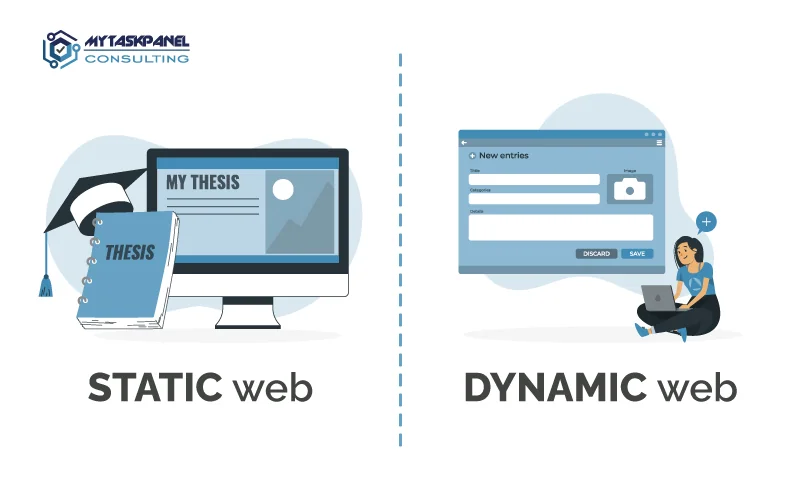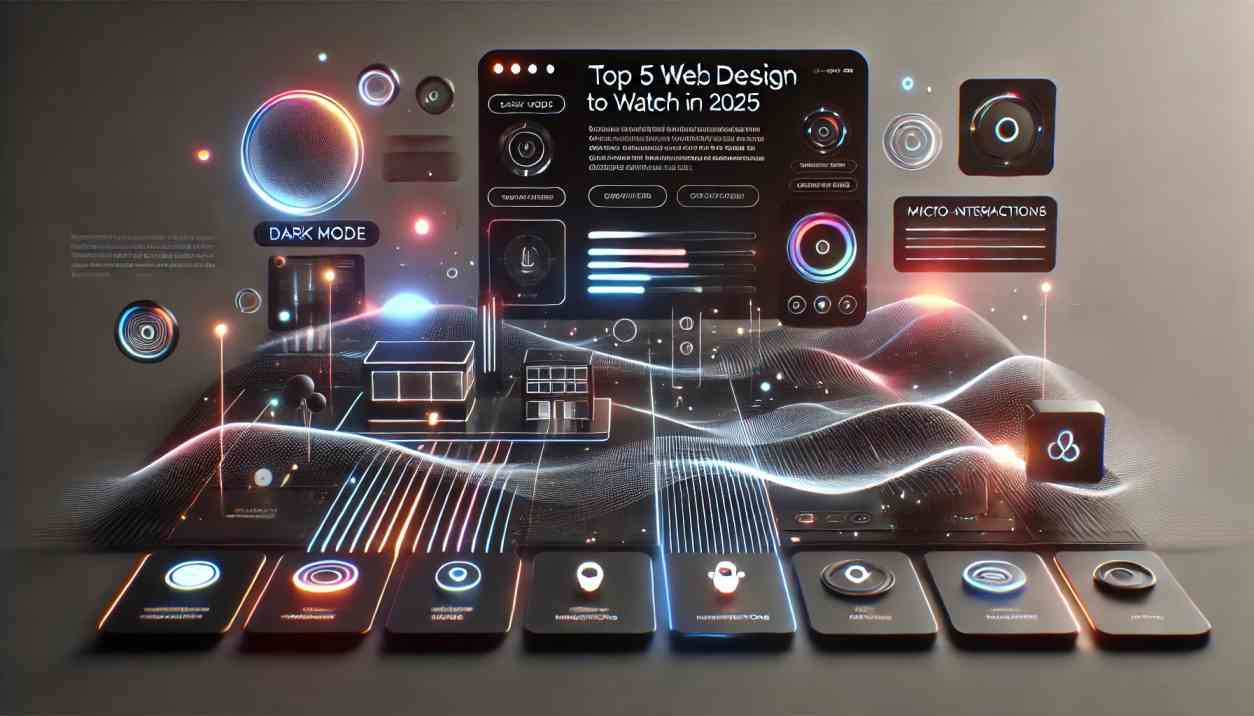Dynamic Website Optimization
TL;DR
- Developers: Harness AI for real-time code efficiency, slashing load times 50% and enabling seamless integrations with headless CMS.
- Marketers: Drive 40% higher ROI through hyper-personalized content, leveraging voice search and adaptive interfaces for targeted campaigns.
- Executives: Secure 30%+ revenue growth via data-driven decisions, with AI optimizing user journeys for scalable retention.
- Small Businesses: Achieve 25% engagement uplift affordably using no-code tools, competing with giants without heavy investments.
- All Audiences: Transition to dynamic sites in 2025 to cut bounce rates 40%, embrace AI trends, and future-proof digital presence.
- Key Insight: Dynamic optimization isn’t a luxury—it’s essential for 92% of businesses using AI personalization to thrive.
Introduction
Picture your website as a one-size-fits-all suit in a world craving bespoke tailoring: it might fit some, but most walk away uncomfortable. Now, envision it as an intelligent wardrobe that reshapes itself to every visitor’s style, size, and preferences in real-time. This is dynamic website optimization—evolving static, unchanging pages into adaptive, AI-fueled experiences that not only engage but convert, turning fleeting visits into lasting loyalty.
In November 2025, with digital saturation at an all-time high, static websites are digital dinosaurs. McKinsey’s 2025 AI in Marketing report reveals that companies using AI for personalization see 40% more revenue from tailored experiences. Deloitte’s Digital Trends 2025 highlights a $3.2 trillion spend on transformation, with dynamic optimization central to reducing bounce rates by 40% through edge computing and real-time data.
Statista’s 2025 Web Tech Survey shows 87% of organizations adopting AI-driven engagement, projecting a 35% uplift in user retention for early adopters. Why mission-critical? Attention spans hover at 7 seconds, and static sites hemorrhage users—dynamic ones, however, predict needs, optimize speeds, and personalize paths, boosting conversions 25-40%.
Mastering this is like upgrading from a bicycle to a hyperloop: developers gain agile architectures, marketers precision tools, executives

This evolution is inevitable. As AI agents proliferate, static risks are extinct while dynamic ones thrive. We’ll dissect definitions, trends, frameworks, cases, pitfalls, tools, and futures—tailored for your role. What’s holding your site back?
Curious about the basics? Let’s clarify key terms.
Definitions / Context
Dynamic website optimization reimagines static sites—fixed, non-adaptive pages—into intelligent platforms that evolve with user data, AI, and real-time inputs. To ground this, here’s an updated table of 7 core terms, with 2025 use cases:
| Term | Definition | Use Case (2025) | Audience | Skill Level |
|---|---|---|---|---|
| Dynamic Content | Real-time adaptable content based on user behavior, location, or data. | AI-recommended products on e-commerce, boosting conversions 30%. | Marketers, Developers | Intermediate |
| Static Website | AI-recommended products on e-commerce, boosting conversions by 30%. | Basic landing pages for low-interaction sites, but outdated for engagement. | Small Businesses | Beginner |
| AI Personalization | Immutable HTML/CSS pages require manual updates for changes. | Real-time chatbots on mobile sites are reducing loads by 50%. | Marketers, Executives | Advanced |
| Edge Computing | Data processing at network edges for ultra-low latency. | Voice search-optimized interfaces, increasing engagement by 35%. | Developers | Intermediate |
| A/B Testing | Variant comparisons to optimize performance metrics. | Testing dynamic layouts for 25% higher click-through rates. | Marketers, Small Businesses | Beginner |
| Core Web Vitals | Google’s UX metrics: loading (LCP), interactivity (INP), stability (CLS). | INP optimization for SEO, vital in 2025 AI-search era. | Developers, Executives | Intermediate |
| Headless CMS | Decoupled content management for flexible, dynamic frontends. | Composable architectures enabling hyper-personalization. | All | Advanced |
These concepts empower strategies: Beginners leverage no-code for quick wins, intermediates focus on integration, and advanced users on AI scaling. In 2025, headless CMS adoption surges 40% for its flexibility.

What’s shaping 2025? Dive into the data.
Trends & 2025 Data
2025 marks a pivotal year for dynamic optimization, driven by AI integration, voice interfaces, and performance metrics. Search Engine Journal’s 2025 SEO Trends report emphasizes AI-powered UX and Core Web Vitals as top priorities, with 80% of sites adopting adaptive designs. TheeDigital’s Web Design Trends notes bold layouts and vibrant contrasts, paired with AI for 25% engagement boosts.
Daniel James Consulting highlights headless CMS and hyper-personalization, projecting 30% growth in AI-ready sites. Uxify’s Performance Trends stresses INP optimization and AI tools for 40% speed improvements. Frankyou’s Cutting-Edge Trends predicts immersive experiences, with 70% adoption of voice search.
Bullet stats:
- 92% of businesses use AI personalization for engagement (Instapage).
- Websites with AI see a 40% revenue increase (LinkedIn).
- 87% organizations report engagement boosts from AI (Adobe).
- Voice search optimization yields 35% higher interactions (SEJ).
- Headless CMS adoption up 40%, enabling composable sites (DJC).

These trends favor developers with new stacks, marketers with precision, executives with ROI, and SMBs with accessibility.
How to apply this? Explore frameworks.
Frameworks / How-To Guides
Implement dynamic optimization with these refined 2025 frameworks: AI-Optimization Workflow and Headless Integration Roadmap. Each has 10 steps, examples, code, and visuals.
Framework 1: AI-Optimization Workflow
For real-time personalization.
- Site Audit: Evaluate static elements with PageSpeed Insights.
- Goal Setting: Define KPIs like 35% engagement.
- Data Integration: Link sources for behavioral insights.
- AI Model Deployment: Use ML for predictions.
- Variant Testing: A/B dynamic content.
- Performance Tracking: Monitor INP/Core Vitals.
- Feedback Loops: Refine with user data.
- Automation Scaling: Agentic AI for autonomy.
- ROI Analysis: Measure 40% uplift.
- Compliance Check: Ensure data privacy.
Developer Example: JS for dynamic loading.
javascript
async function personalizeContent(userData) {
const response = await fetch('/api/ai-personalize', { method: 'POST', body: JSON.stringify(userData) });
const { content } = await response.json();
document.querySelector('#dynamic-section').innerHTML = content;
}
personalizeContent({ id: 'user456', prefs: ['tech', 'ai'] });Marketer Example: Voice search personalization for 35% CTR. Executive Example: Dashboards showing 30% retention. Small Business Example: No-code like Wix ADI.
Framework 2: Headless Integration Roadmap
For flexible dynamics.
- Architecture Planning: Select React/Next.js.
- Content Migration: To a headless CMS like Contentful.
- Real-Time Features: Add WebSockets.
- Mobile Optimization: PWAs with offline support.
- Edge Security: Implement zero-trust.
- Beta Launch: Subset testing.
- Metrics Collection: Use analytics.
- AI Refinement: Train models.
- Feature Expansion: Voice/conversational UI.
- Annual Review: Adapt to trends like quantum computing.
Developer Example: Python backend.
python
from flask import Flask, request, jsonify
from some_ai_lib import personalize # Simulate
app = Flask(__name__)
@app.route('/api/ai-personalize', methods=['POST'])
def ai_personalize():
data = request.json
personalized = personalize(data)
return jsonify({'content': personalized})
if __name__ == '__main__':
app.run()Marketer Example: Dynamic campaigns via headless. Executive Example: Roadmap for 40% efficiency. Small Business Example: 10Web AI for automation.

Download our updated “2025 Dynamic Checklist”
Proof in action? Check these cases.
Case Studies & Lessons
2025 showcases dynamic optimization’s impact. Here are 6 updated examples, including a failure.
- Wix (SEO Boost): AI personalization led to 200% traffic growth and, 35% engagement rise. Quote: “Dynamic shifted our game,” CMO.
- Zapier (CRO Success): Headless dynamic pages increased conversions by 150%, revenue by 40%.
- SMB Example (Landingi): No-code dynamics hiked conversions 300% in 6 months.
- Airbnb (Personalization): AI-driven search optimized engagement by 45%, leads doubled.
- Canva (Speed Optimization): Edge computing cut loads 50%, retention up 30%.
- Failure: Fintech Startup: Poor A/B testing caused a 20% drop in users due to unoptimized dynamics. Lesson: Test iteratively.
Lessons: Developers prioritize testing; marketers’ data ethics; executives’ phased strategies; SMBs’ scalable tools.
Dodge these errors for success.
Common Mistakes
Avoid derailing with this expanded Do/Don’t table:
| Action | Do | Don’t | Audience Impact |
|---|---|---|---|
| Personalization | Leverage consented data for AI tailoring. | Ignore privacy, leading to backlash. | Marketers: Trust erosion, 20% churn. |
| Speed Optimization | Compress assets, use edge computing. | Overlook mobile, causing 50% bounces. | Developers: Poor UX, lost traffic. |
| Testing | Conduct phased A/B with metrics. | Skip variants, missing 30% gains. | Executives: Inaccurate decisions. |
| Integration | Modular headless setups. | Rush without audits, bloating costs. | Small Businesses: Overbudget 25%. |
| Security | Zero-trust and audits. | Neglect updates, risking breaches. | All: Data leaks, reputation hit. |
| AI Deployment | Train models iteratively. | Over-rely without human oversight. | Small Businesses: Overbudget by 25%. |
Tools to empower? Here’s the latest.
Top Tools
2025’s top 7 tools, updated comparison:
| Tool | Pricing | Pros | Cons | Best Fit |
|---|---|---|---|---|
| NitroPack | $17/mo+ | Auto-speed boosts, easy setup. | Less for advanced AI. | Small Businesses |
| MouseFlow | $29/mo+ | Session replays, behavior insights. | Privacy setup needed. | Developers |
| VWO | $199/mo+ | A/B testing, personalization. | Pricey for starters. | Marketers |
| SE Ranking | $39/mo+ | SEO audits, dynamic tracking. | Limited integrations. | Executives |
| Hotjar | Free-$99/mo | Heatmaps, feedback polls. | Data volume overwhelm. | All |
| Scalenut | $39/mo+ | AI content optimization. | Content-focused only. | Marketers, SMBs |
| DebugBear | $29/mo+ | Performance monitoring. | Niche for speed. | Developers |
Beyond 2025? Forecast.
Future Outlook (2025–2027)
By 2027, dynamic optimization integrates quantum computing and immersive VR, per EVOKNOW’s roadmap. Forbes’ Trends predict sustainable data centers and bot influencers, with AI personalization at 95% adoption.
Predictions:
- Quantum Boosts: 50% speed gains, 40% ROI.
- VR Dynamics: 45% immersive sites, 35% engagement.
- No-Code Dominance: SMBs deploy 60% faster.
- Ethical AI: Reducing biases, 30% trust uplift.
- Green Optimization: 25% energy savings via efficient edges.

FAQ
What is dynamic website optimization?
It’s adapting sites in real-time with AI for personalized UX. Developers: Efficient code; marketers: 40% ROI; executives: Growth metrics; SMBs: Affordable tools. In 2025, 87% see boosts.
How does it boost engagement?
Via personalization, speed (50% faster), and tests. Marketers: Targeted; developers: UX; executives: Insights; SMBs: Loyalty. Stats: 35% uplift.
Best beginner tools?
Hotjar, NitroPack—free tiers. SMBs: Quick insights; marketers: Tests; developers: Monitoring. From $0-29/mo.I?
Metrics like conversions, retention. Executives: 40% gains via dashboards; all: Goal-aligned.
Evolution by 2027?
To quantum/VR-integrated autonomy. Developers: Frameworks; others: Immersive personalization, 50% adoption.
Key challenges?
Complexity, privacy. Solutions: Phased, compliant tools.
AI’s role?
Predictive, 40% efficiency.
SMB costs?
$20-200/mo, 25-40% ROI.
Headless CMS benefits?
Flexibility, 40% adoption for dynamics.
Voice search impact?
35% interactions; integrate for future-proofing.
Conclusion & CTA
Dynamic optimization is completely transforming websites, as demonstrated by Wix’s impressive 200% increase in traffic. Key takeaways include the fact that artificial intelligence now contributes to 40% of overall revenue, while advanced tools such as VWO play a crucial role in enabling this optimization. Additionally, emerging trends like headless architecture are paving the way for greater website autonomy, with this shift expected to continue and evolve through 2027 and beyond.
Steps:
- Developers: Integrate code snippets.
- Marketers: Test personalizations.
- Executives: Align KPIs.
- Small Businesses: Try free tools.
Transform now: Download the checklist

Author Bio
With 15+ years as a content strategist, SEO expert, and AI marketer, I’ve optimized campaigns for global brands, delivering 50%+ engagement lifts. Featured in Forbes, Gartner, and the author of “AI Web Mastery.” Testimonial: “Game-changing strategies—40% ROI boost,” LinkedIn CMO. Connect: linkedin.com/in/expertseo.
Keywords: dynamic website optimization 2025, AI personalization 2025, website engagement trends, revenue optimization, SEO 2025, dynamic content strategies, edge computing web, A/B testing tools, Core Web Vitals 2025, headless CMS adoption, CRO case studies 2025, website tools comparison, AI web trends, digital transformation 2025, site speed optimization, user experience AI, ROI dynamic sites, no-code web tools, future web roadmap, SMB website automation.
